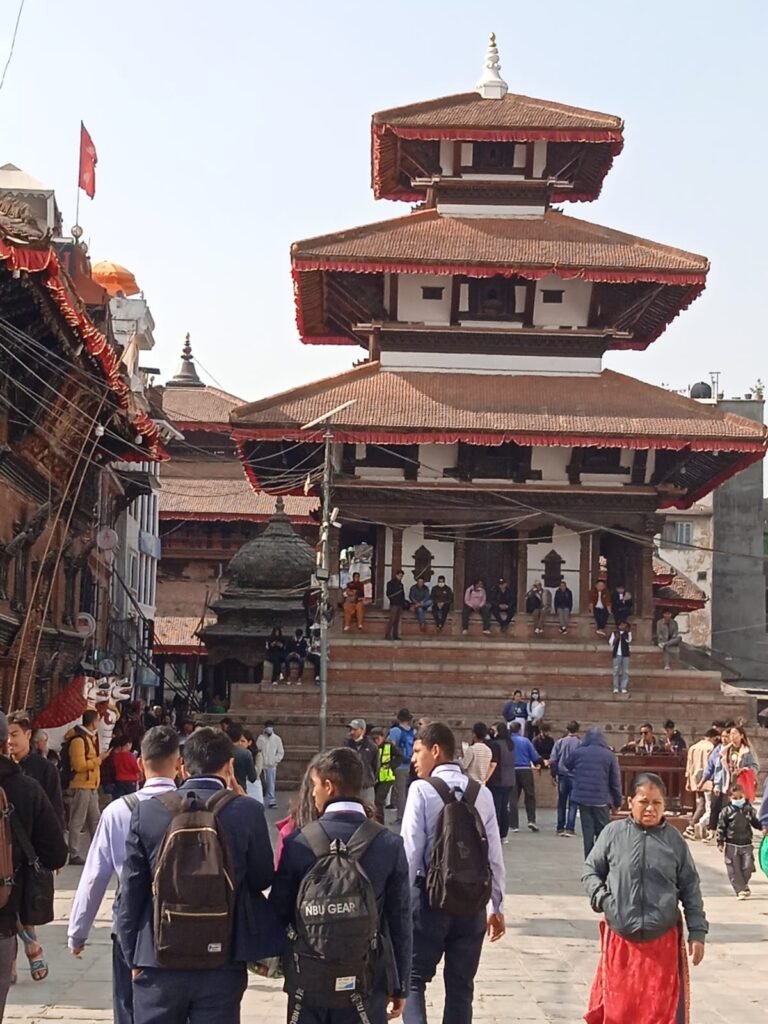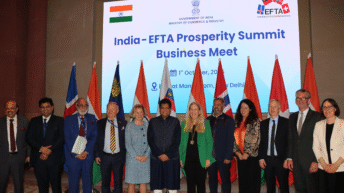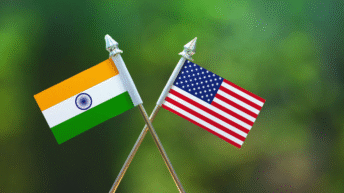
There is a mesmerising quality to Nepal, because of its location as a gateway to the Central Himalayas and of its spiritual heritage as a crucible of Tantric Hinduism and Vajrayana Buddhism. This land of mystery in which pagodas evoking the far East shelter vedic deities, side by side with Tibetan-style chortens is also a living conservatory of the now quaint hippie age in its hybrid mix of Californian bohemian counter-culture and oriental psychedelic mysticism. The easygoing local population still shelters some of the survivors of that outdated rebellion against the industrial consumer society which gave Kathmandu its reputation as a magnet and a haven for the pursuit of the spiritual quest as well as for the mountaineering ambition to challenge one’s physical limits.
Much has changed in Nepal since the end of the 240 year old monarchy in 2008 and yet much remains surprisingly untouched. The dreadful 2015 earthquake seems to have restored in people a sense of priorities and an attachment to their traditional values, visible in the great resources invested in rebuilding and restoring toppled historic and religious monuments. I was told by various people of diverse backgrounds that the revolutionary communist fire has been dampened by cold realism. Many of the Maoist and Marxist leaders have tasted wealth and privilege and are no longer interested in wiping out the old system, banning the ‘opiate of the people’ or nationalizing private assets. The politics of compromise has hatched, out of electoral necessity, heterogenous coalitions at whose door radical or extremist parties have left their ideologies in order to share power. The Terrai region where the landowning class had been expropriated by the Naxals is now largely peaceful and the seized houses and farms have been mostly returned to their legal claimants.

Dr. Hari Bansh Jha, a seasoned analyst of Nepal’s political life wrote on the ORF website on November 20, 2022: The ruling alliance comprises the Nepali Congress, the Communist Party of Nepal (Maoist-Centre), the Socialist Party of Nepal, the Communist Party of Nepal (Unified Socialist), the Loktantrik Samajwadi Party, Nepal and the Rashtriya Janamorcha; while the opposition alliance comprises CPN-UML, Nepal Pariwar Dal, Rashtriya Prajatantra Party, Nepal and Janata Samajbadi Party.
Commenting on the growing voter apathy among the population, he asks in the same article: In electoral alliance politics in Nepal, ideology has been rendered meaningless. Had it not been so, how could a democratic party such as the Nepali Congress form an electoral alliance with the ultra-left Maoist party or even the anti-federalist Samyukta Janamorcha? How could the CPN-UML join hands with a pro-Hindu and pro-monarchical party like Rashtriya Prajatantra Party? How could the pro-Madhesh Janata Samajbadi Party which was at logger’s heads with the CPN-UML during the Madhesh movement in 2015-16 ally with it? How is it that the two Madhesh-based parties, instead of forming a natural alliance between themselves, are tagging along with either the ruling alliance or the Opposition alliance?
The cluster of parties led by the Nepali Congress was expected to win the latest elections which it did handily while its Maoist partner performed rather poorly. The opposition leftists did not fare too well, confirming that a politically conservative and economically liberal trend, doubtlessly influenced by the BJP’s sway in India, is rising in Nepal. There is disillusionment with two core tenets of the Leftist revolution: secularism and federalism. Both are seen as potential threats to the national unity and identity, forged by Hinduism and the monarchy, also during the century-long regency of the Ranas. Federalism does not always work well in comparatively smaller nations where it tends to create regional identity politics that breeds separatism, while dividing power between various intersecting institutions which, apart from wasting resources, can result in paralysis by multiplying bureaucratic and political offices. Nepal’s current system has begotten more than a hundred parties, 85 of which contested the last elections. This proliferating fractious factionalism has made the political landscape quite inscrutable.
Nepal’s policies are inevitably shaped by the perpendicular and often conflicting influences of its two giant neighbours between which its government tries to chart a middle path. However, the connection with India is organic and therefore much stronger than with China which stands remote, culturally and geographically, across the daunting barrier of the Himalayas and of the immense Tibetan plateau, forever a borderland on the fringe of the former ‘Middle Kingdom’. On the other hand, Nepal’s madheshi lowlands and their denizens merge seamlessly with the adjacent Gangetic heartland and its inhabitants while the Nepali western and eastern borders are also man-made, given the geographic and civilizational continuum of the Himalayan landmass. Despite the pride the Nepalis evince in their distinct identity and the widespread misgivings about the overwhelming size and power of the Indian Big Sister, they don’t question the fact that they are inseparably interconnected with Bharat and that their survival as a state largely rests on the goodwill of New Delhi. It is a delicate relationship which India must always handle with kid gloves but the gradual effect of regional cooperation, facilitated by BIMSTEC and other such international initiatives, is to lower tensions and improve trust.
Nepal, partly due to its strategic location and exotic appeal, attracts much interest from all over the world. Its émigré labour force has created strong bonds with oil-rich Gulf states and, well ahead of tourism, remains the principal source of revenues of the country and protects it from the kind of economic slump which affects Sri Lanka at present. Some controls have had to be imposed on alpine expeditions whose proliferation has caused lasting damage to the fragile Himalayan ecology and resulted in a number of tragic fatal accidents.
Missionaries of various denominations see in Nepal a fertile ground for conversions to Christianity, Islam, Mormonism and other religions. Awareness of the potentially negative consequences of these inroads into the native civilisation is rising in domestic ruling circles. This makes a strong case for those who wish for a return of the State to its original hindu character, symbiotically connected with the local Buddhism. The supporters of a restoration of constitutional monarchy are much less numerous so far but there is strong popular interest in preserving the royal legacy in all its forms. The mosaic-like character of the current political dispensation does not allow the projection of strong national leaders who can satisfy the need for a personalization of the State, particularly in an ethnically diverse country like Nepal whose collective identity took shape under the aegis of an iconic royal symbol. The coming years will tell if this natural yearning for historical continuity and stability leads to a change in the still rather contentious 2015 Constitution.
India’s current foreign policy is notably appreciated by Nepali observers. The firmness of New Delhi’s position against the tremendous pressure exercised by the United States and allies to make India adopt the sanctions slapped on Russia by the West wins wide endorsement among the elites in Nepal. By not giving full support to Russia in its military operation in Ukraine, the principled stand taken by Foreign Minister Jaishankar is regarded as logical and in the best interest of the region while being the most conducive to the restoration of peace in Europe and elsewhere. In particular, South Block’s insistence that sanctions can only be valid if imposed by the United Nations Security Council is seen as a healthy caveat for the NATO alliance’s call for a ‘rules-based order’, implicitly dictated by ‘rich western democracies’.
In Kathmandu there is presently, it seems, agreement with India on many issues, also reflected in a perceptible cooling of ties with China which has held back on some of its commitments for investment and financial assistance. Beijing may not be too happy with the Singh Darbar’s current foreign policy and is making its displeasure known by withholding economic support, although Chinese tourism in Nepal is thriving.







Add comment